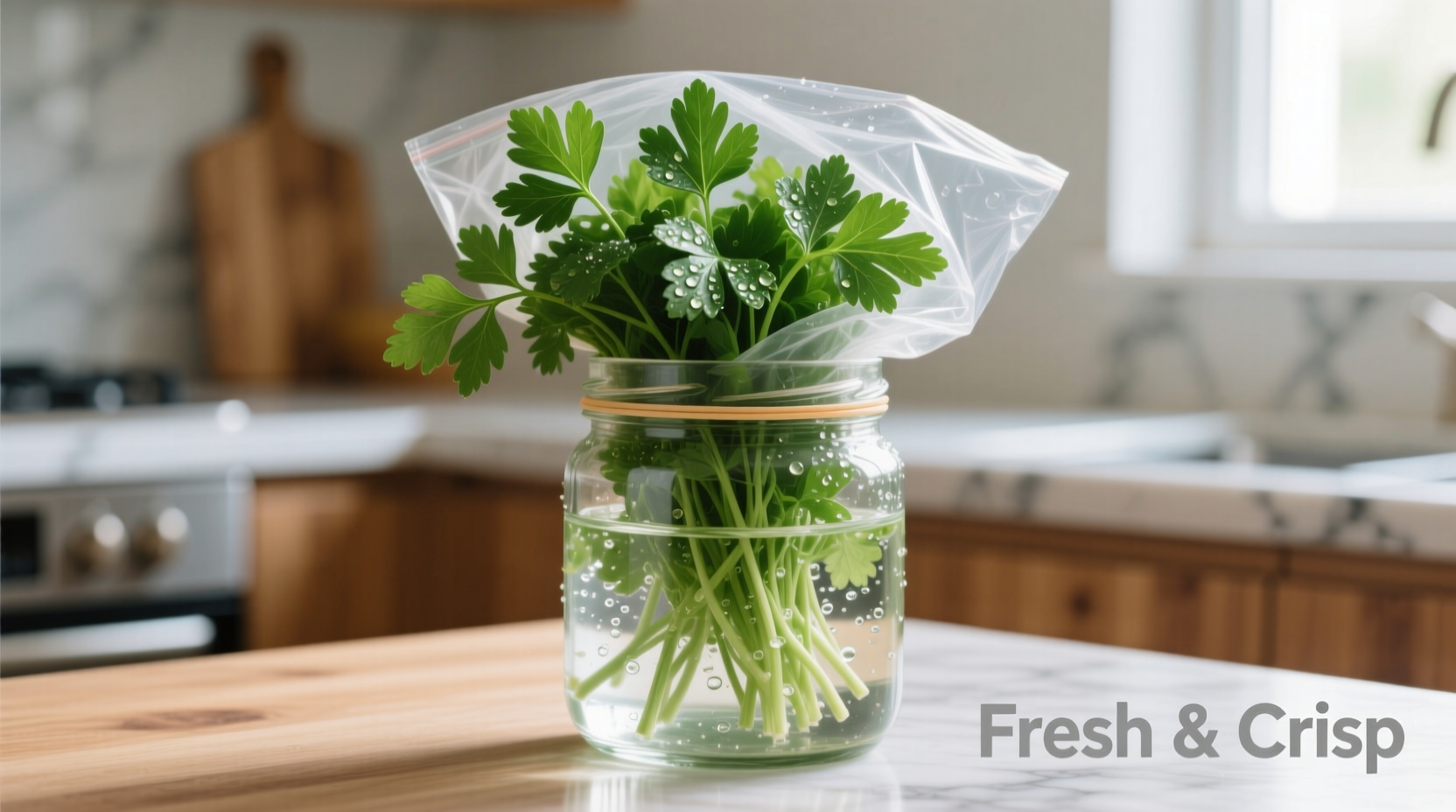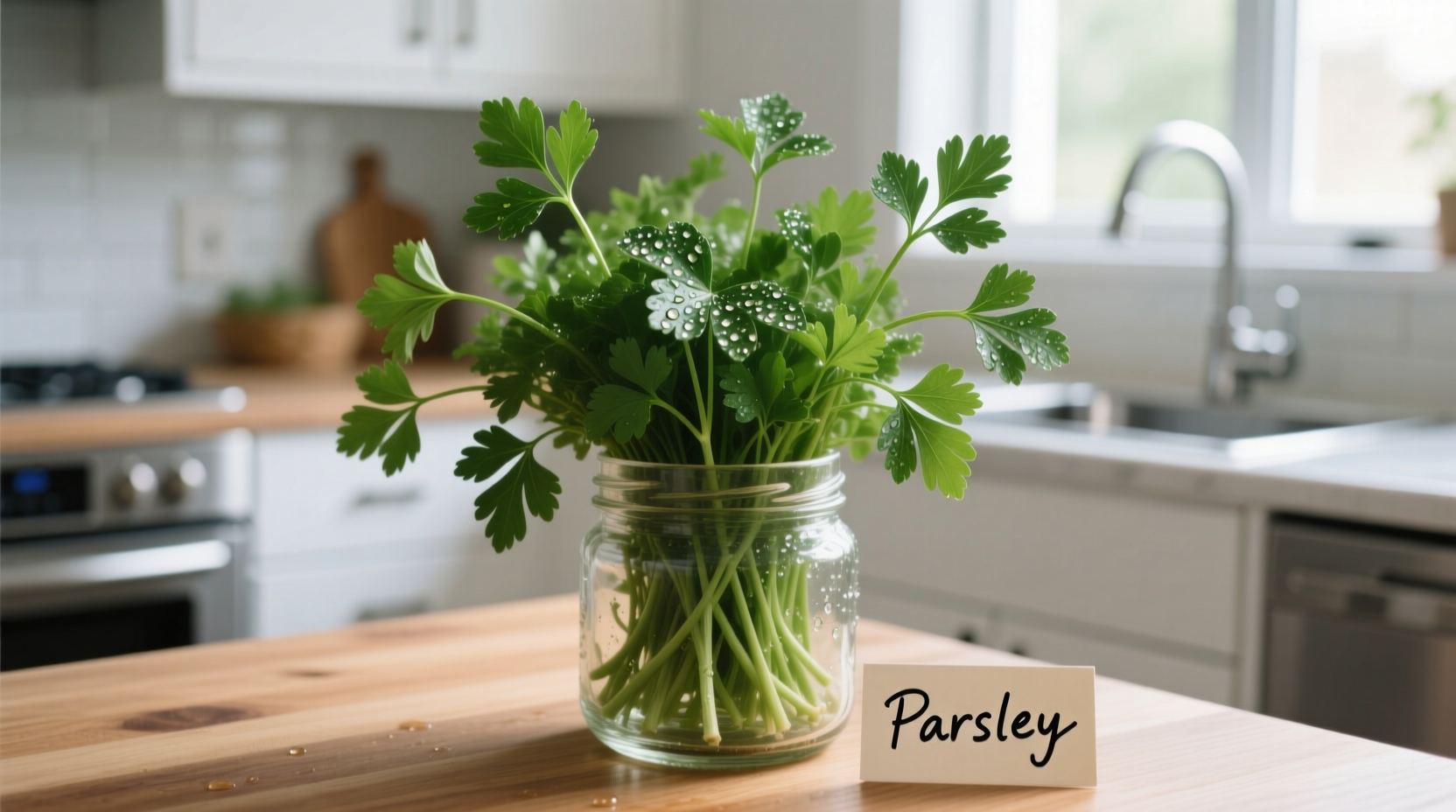Nothing ruins a dish faster than limp, yellowing parsley. As a chef who's worked with fresh herbs daily for over 15 years, I've tested every storage method imaginable. Whether you've just returned from the farmers' market or need to make that grocery store bunch last, these science-backed techniques will transform how you handle this delicate herb.
| Storage Method | Expected Freshness | Best For | Key Requirements |
|---|---|---|---|
| Water + Bag Method | 2-3 weeks | Daily cooking needs | Trimmed stems, filtered water, breathable cover |
| Damp Paper Towel | 1-2 weeks | Short-term storage | Moist (not wet) towel, airtight container |
| Herb Keeper Container | 2-3 weeks | Convenience seekers | Specialized container, regular water changes |
| Freezing in Oil | 6-12 months | Long-term cooking | Chopped parsley, olive oil, ice cube trays |
| Air-Dried Bundles | 1-2 years | Preserving harvests | Well-ventilated space, low humidity |
Why Proper Parsley Storage Matters
Parsley's high water content (approximately 87%) makes it particularly vulnerable to moisture loss and microbial growth. According to the USDA's FoodKeeper app, improperly stored herbs can lose nutritional value within days. The vitamin C content in parsley decreases by 25% within the first week when stored incorrectly, while proper storage maintains nutrient levels significantly longer.
The Water Method: Professional Results at Home
This technique mimics how florists keep cut flowers fresh and works because parsley continues to absorb water through its stems. Here's the chef-approved process:
- Prep the stems: Trim ½ inch from the bottom using sharp scissors (crushing damages vascular tissues)
- Choose the right container: A 12-16 oz glass works best - too large and water evaporates too quickly
- Water quality matters: Use filtered water changed every 2-3 days to prevent bacterial growth
- Temperature control: Store at 34-38°F (1-3°C) - the crisper drawer's high-humidity setting is ideal
- Light management: Cover loosely with a perforated plastic bag to maintain 90-95% humidity

This method works because it addresses parsley's two main enemies: dehydration and ethylene exposure. The water replenishes moisture while the breathable cover creates a modified atmosphere that slows respiration. Cornell University's Food Science Department confirms this approach maintains herb freshness by reducing water loss by up to 60% compared to standard storage.
When the Water Method Isn't Practical
Not everyone has space for herb jars in their refrigerator. These alternative approaches work well for different situations:
Damp Paper Towel Technique
Ideal for pre-washed supermarket bundles. Line a container with slightly damp (not wet) paper towels, place parsley inside, and cover with additional towel before sealing. The moisture balance is critical - too wet encourages mold, too dry causes wilting. Change towels every 3-4 days. This method typically maintains freshness for 7-10 days.
Freezing for Long-Term Storage
For cooks who use parsley regularly in cooked dishes:
- Chop parsley finely and pack into ice cube trays
- Cover completely with olive oil (prevents freezer burn)
- Once frozen, transfer cubes to labeled freezer bags
This technique preserves flavor compounds better than water freezing. The National Center for Home Food Preservation notes that oil-infused herbs maintain 90% of their volatile compounds compared to 70% with water freezing.
Troubleshooting Common Storage Problems
Yellowing leaves: Caused by excess moisture or ethylene exposure. Solution: Ensure proper air circulation and store away from ethylene-producing fruits like apples.
Black spots: Indicates bacterial soft rot. Prevention: Always use clean containers and change water regularly. The FDA recommends discarding any parsley showing these signs.
Reviving wilted parsley: Submerge in ice water for 15-20 minutes. The cold shock temporarily rehydrates cells. This works best within the first 48 hours of wilting.
When to Use Each Storage Method
Understanding context boundaries prevents storage failures:
- Water method: Best for whole sprigs used in garnishes or cooking
- Freezing: Ideal for chopped parsley in sauces, soups, and stews
- Drying: Suitable only for cooking applications (flavor concentrates but texture changes)
- Avoid plastic bags alone: Creates condensation that accelerates spoilage
Remember that storage effectiveness depends on initial quality. Always select parsley with crisp, dark green leaves and firm stems. Avoid bunches with yellowing or slimy spots, as no storage method can reverse existing deterioration.
Maximizing Your Parsley Investment
Proper storage isn't just about convenience - it's food waste reduction. The USDA estimates that 30-40% of the food supply gets wasted, with fresh herbs among the most commonly discarded items. By implementing these techniques, you'll not only save money but ensure you always have vibrant parsley for your culinary creations.











 浙公网安备
33010002000092号
浙公网安备
33010002000092号 浙B2-20120091-4
浙B2-20120091-4